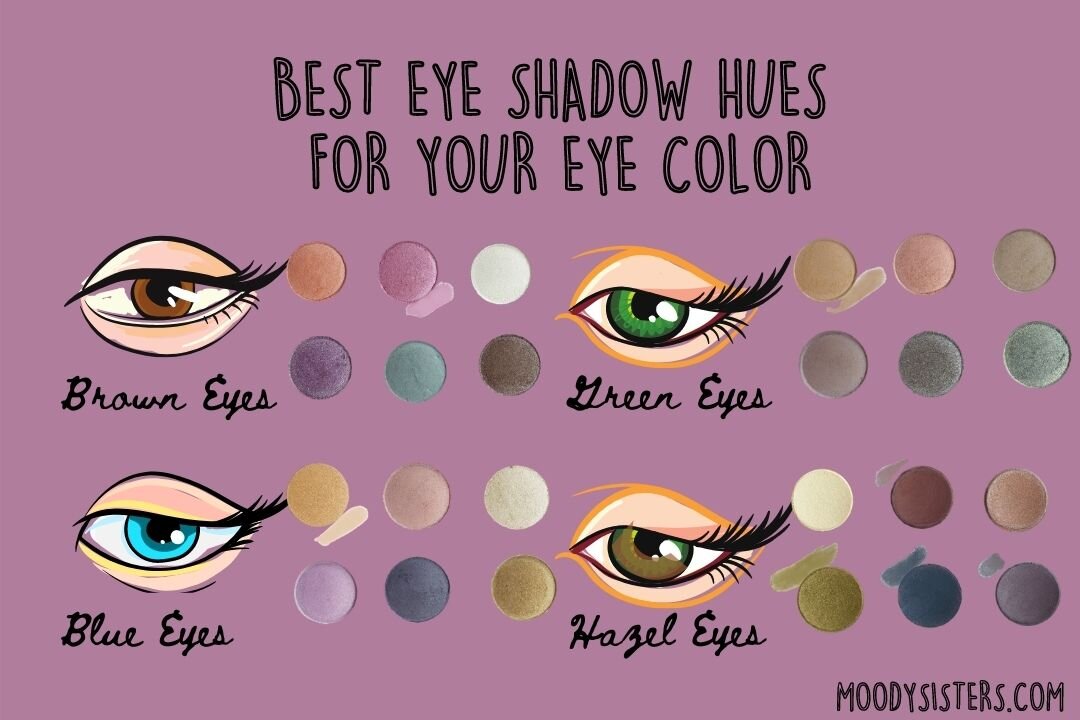Have you ever been curious about what eye color your child might inherit? The combination of brown and green eyes can lead to a spectrum of possibilities. From deep, rich shades to the most captivating hazel, the journey to understand this fascinating genetic dance is both intriguing and perplexing.

Image: www.reddit.com
While understanding the interplay of genes can seem complex, it’s a journey we can embark on together. Exploring the intricacies of eye color inheritance, from the basics of dominant and recessive genes to the nuances of melanin and the environmental factors that can influence these intricate expressions, will guide us through this captivating puzzle. In this article, we’ll unveil the science behind the magic of eye color, shedding light on the possibilities that arise when brown and green eyes combine.
The Genetics of Eye Color
Let’s start with the fundamentals. Eye color is determined by the amount and distribution of a pigment called melanin. Melanin resides in the iris, the colored part of the eye. The more melanin present in the iris, the darker the eye color.
While numerous genes contribute to eye color, the most influential is the OCA2 gene, responsible for producing a protein involved in melanin production. It’s important to note that eye color inheritance is not as straightforward as a simple dominant/recessive pattern. There are multiple genes that influence eye color, and their relationship is incredibly complex.
Understanding Dominant and Recessive Genes
To understand how brown and green eyes can create a variety of offspring eye colors, let’s delve into the world of dominant and recessive genes. Think of genes as blueprints, each carrying instructions for a specific trait. There are two copies of each gene, one from each parent.
A dominant gene exerts its influence regardless of the other gene’s copy. For eye color, brown is usually dominant. This means even with one brown gene and one gene for a different color, the eye color will lean towards brown. Recessive genes only manifest their trait if both copies of the gene are present. For instance, blue eyes are often recessive.
The Spectrum of Possibilities: Brown and Green Eyes
Now, let’s explore the enchanting possibilities that arise when brown and green eyes meet. Since brown eyes are often dominant, it is highly likely that a child will inherit brown eyes when parents have one brown and one green eye. However, the recessive green gene doesn’t disappear! It can still lie dormant, ready to be passed down to future generations.
There is also the exciting potential for a child with brown and green eyes to have hazel eyes. Hazel eyes contain a mixture of pigments, creating a mesmerizing blend of brown, green, and sometimes even golden flecks. It’s like a canvas painted with a symphony of colors!

Image: www.rosmaninhoazevedo.com
Unveiling the Mystery of Hazel Eyes
Hazel eyes, like a captivating puzzle, are a mystery to many. Their color seems to dance and change with the light. This fascinating phenomenon is due to the presence of both brown and green pigments in the iris. The distribution of these pigments creates the mesmerizing effect we observe.
For instance, in bright light, the golden or brown flecks in hazel eyes become more prominent, while in dimmer lighting, the green hues take center stage. The captivating dance of light and color truly makes hazel eyes a spectacle to behold.
Environmental Influences on Eye Color
While genes hold the primary key to eye color, it’s fascinating to understand that the environment also plays a role in shaping the final outcome. Factors like exposure to sunlight, diet, and even health conditions can subtly alter the appearance of eye color.
Exposure to sunlight can cause the production of more melanin, leading to a deeper, richer shade of brown. This explains how a child’s eye color can sometimes appear to darken slightly with age. Diet is another intriguing factor. For example, the consumption of certain foods rich in carotenoids, like carrots and sweet potatoes, can contribute to a slight yellowing effect in the eye color.
The World of Eye Color Genetics is Ever Expanding
The world of eye color genetics is constantly evolving. Researchers continue to uncover new genes and mechanisms that influence the intricate expression of this captivating trait. The more we learn, the deeper our understanding becomes.
For instance, scientists are exploring the role of other genes, beyond OCA2, in influencing eye color. They are also studying the complex interplay of these genes and how they work together to create the unique spectrum of hues we see in human eyes. This intricate dance of genes, melanin, and environmental factors creates a complex, fascinating tapestry of eye colors.
Brown And Green Eyes Make What Color
Conclusion
Eye color is a captivating blend of genetics and environment. The combination of brown and green eyes opens the door to a world of possibilities, from vibrant brown to mesmerizing hazel. The journey of understanding eye color inheritance reveals the intricate dance of genes and the subtle influence of the environment.
As you explore the fascinating world of eye color, embrace the intrigue and marvel at the intricate tapestry of life. Next time you gaze into a child’s eyes, take a moment to wonder about the genetic dance that produced such captivating beauty.





